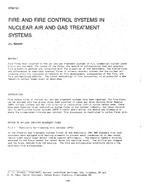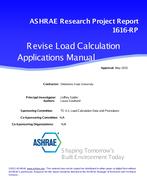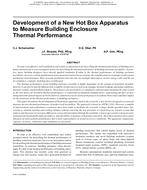It is generally accepted that there are six primary variables that govern the feeling of comfort on the part of occupants of any given structure1 and 2. The variables are air temperature, relative humidity, air velocity, mean radiant temperature, the level of activity of the occupant, and the amount of clothing worn. Experimental work has been done over the past fifty years to determine the interrelationships among these variables and how a change in one, with given fixed values of the others, affects comfort3, 4, 5, 6, 7, 8, and 9. More recently, mathematical models which have been verified by some of the past experiments, have been used in these studiesl , 10, 11, and 12.
The use of mean radiant temperature (MRT) as a one-point indicator of the effect of the radiant environment on a human subject is in many cases a shortcoming. The mean radiant temperature at a specific point in an environment is defined as the uniform surface temperature of an imaginary black enclosure with which a small black sphere at the test point would exchange the same energy by radiation as it does in the actual environment. In other words, it is a single temperature that gives an indication of the entire radiation environment as an averaged effect. It gives no indication of asymmetrical aspects of the particular environment.
Product Details
- Published:
- 1976
- Number of Pages:
- 19
- File Size:
- 1 file , 1.8 MB
- Product Code(s):
- D-SE-2419
- Note:
- This product is unavailable in Russia, Belarus


